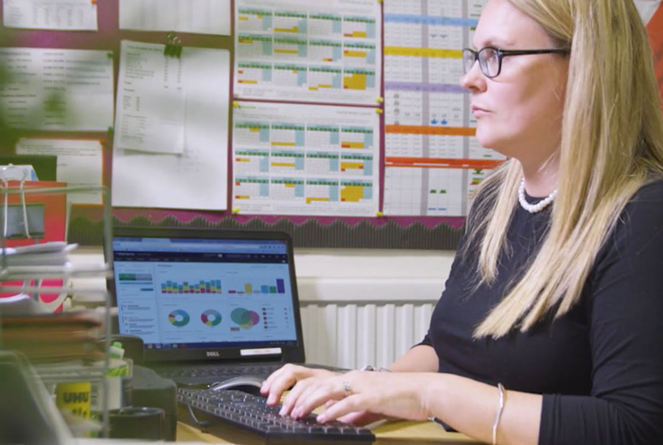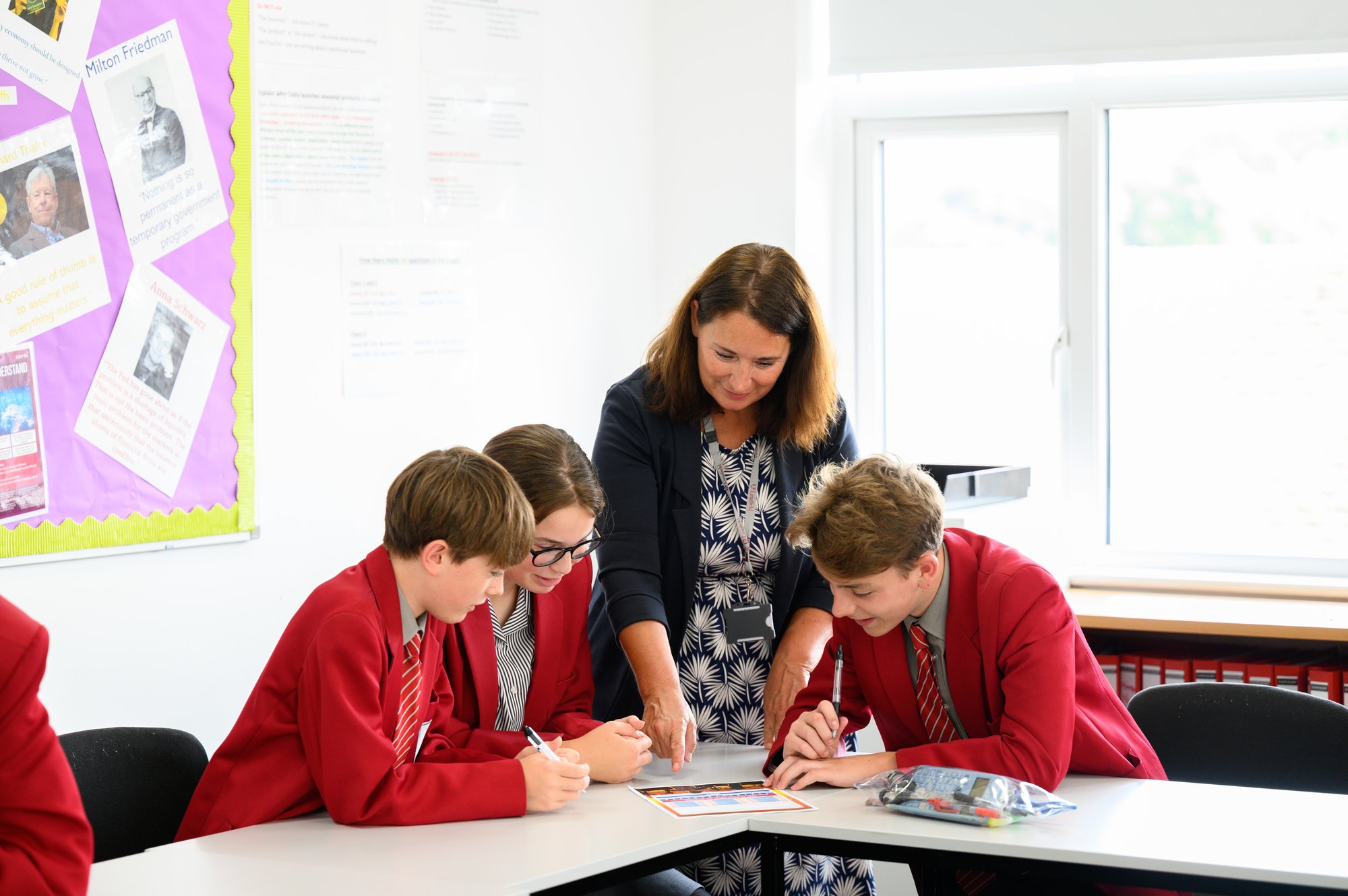Introduction
With a rich background spanning two decades, Claire excels as an educator, having seamlessly transitioned between roles as a dedicated class teacher, a skilled school leader, and an advanced skills teacher within her local LEA. Currently, she shines in her role as Juniper's Training and Development Manager and, in this blog, shares her top tips on how you can prepare for a successful September, plus her first-hand experience of starting a new academic year.
First-hand experience
During my time as a primary teacher, I always loved the first school day of term; the room has been deep cleaned, the pencils have all been sharpened, it’s all new, expectant, and everyone is full of hope. I would excitedly raid the ‘Range’ and ‘B&M’ over the summer for all manner of items that would delight and support the little darlings coming into my care.
Then comes the business of getting to know all the new little characters and minds, getting to grips with all their names, setting the tone for the culture and the behaviour, and all whilst hitting the ground running with the teaching content. It gets busy quickly, and without proper preparation and some tricks up your sleeve, that warm and fuzzy day-one feeling can very quickly fade, replaced with an overwhelming sensation as a heavy workload sets in. Ultimately, how we as professionals manage this fine balance sets the tone for the year and determines our classroom’s success and atmosphere. In order to assist you in preparing for a successful September and a fruitful year ahead, I’ve compiled my top 12 tips that will contribute to your optimal start.
12 top tips for a successful September and an excellent new academic year
Do your Research
Find out as much as you can from other staff members about your new class before day one. Make the most of the INSET day to be clear on any children’s needs and even dig into strategies that have worked well in the past or ones that the children are familiar with from the previous year. Look at the data to identify any gaps and be clear on the direction you want to take in the key areas of learning from day one.
Do a stock take
Lesson delivery goes much more smoothly when the children have everything that they need to hand. Counting and ensuring you have sufficient good quality equipment to hand and filling any gaps is essential to start the year organised and productively. September is also a good time to reflect and improve on housekeeping and the management of resources. If you are an experienced teacher, consider what has worked well in the past. If it is your first year, ask a colleague what works well for them.
Names really matter
Our names are important to us; it’s a key part of our identity, and the children in our care are no different. Learning names quickly really helps with getting children’s attention during teaching, ensuring lessons flow and effectively managing behaviour. Name labels (children can make their own on day one), a seating plan or name games in the early days of the new school year can really help you to remember names quickly and accurately.
Culture then content
We need to set the rules and the culture of the class as a priority before the learning can be in full flow. Rules, whether set as a class or as a school, need to be shared verbally, visually and maybe written on the inside cover of books for older children on the first day. Ensure that behaviour is modified and addressed when indiscretions occur by referring to the associated written rule. This reinforces recall of the key rules as well as deepens and widens the understanding of the rule in its wider context. This does not have to be onerous or time-consuming; a short session (20min) on day one with regular reinforcement is much more effective than a long-drawn-out session in the early days that is not mentioned again.
Help them feel safe
The children, especially younger ones, will feel apprehensive about their new class and teacher. Use part of the first day to give them a quick talk through where to find key items in the class, as well as talk through a typical daily routine and how they are expected to get support and help. This makes your expectations clear to the children and helps them feel at home and secure in their new environment. Visually reinforcing this with younger children is also very effective.
Enjoy getting to know the children
Early in my career, I made the mistake of jumping into the content and dealing with the teaching business without initially stepping back to properly and consciously considering who I was teaching. This is very tempting when the curriculum is very condensed and there is pressure to cover a lot of content. But time to get to really know your children is so important at the start of the new year. It will pay dividends in the long run and help you have a successful September. When you stand back and watch how your pupils work together and respond through a variety of well-planned activities, the individual personalities, learning styles and needs shine through very quickly. The leaders emerge, the quirks show. Allowing yourself this time to observe, consider and reflect is essential for a successful September, as the rest of the year is then built on the understanding of who you are teaching, and you can then adapt the content and delivery through the lens of an awareness of these personalities that you now know so well.
Be aware of children with additional needs and be prepared
Supporting children with SEND is particularly high on the educational agenda this coming year. Supporting these children can feel overwhelming without some strategies to manage individual needs. This can be especially true if you do not have other adult support in the classroom. From years of supporting children with various complex needs, I have found that the most manageable way of supporting them is to incorporate their support into whole class routines wherever reasonably possible. For the most part, it’s good to remember that what is effective for pupils with SEND helps all children. For example, if a child in your class needs a visual timetable, why not provide a large print version on the wall and share the day with everyone? This reinforces routine, supports all the children, and is built into your day without having to find exclusive pockets of time for individuals, leaving the rest of the class unattended, which is not always practical depending on the level of adult support in your classroom. It also becomes part of the normal activity in the class and seamlessly supports those children who really need it without them feeling singled out.
Take care of your well-being
Teaching is a stressful and difficult job requiring you to bring all of yourself daily. Looking after your well-being every day, not just when you begin to feel the strain is so important. Make this the year that manageable chunks of learning are planned into the day. You give yourself time for live marking and feedback during the session, which will ease your workload and be so much more valuable to the children. Resist the temptation to get extra work done during break times and lunch times. This is so hard, I know, but try to think of ways to utilise the classroom learning time in creative ways; this could involve having a class librarian- to support book changes or teaching younger children how to glue snippets into books early in the term to save you lots of preparation time. If an admin task takes your time, consciously consider how this can be done creatively another way; initially investing time to do this, combined with perhaps a bit of whole class skills teaching, can save you from long-term burnout.
Identify deadlines in advance
Being on top of deadlines and getting the relevant information ready a day or so before it is due is helpful when managing stress but also when dealing with the unexpected. Checking the week ahead as a regular activity will support you in feeling organised and on top of the workload.
Collaborate and share
Get together with other teachers within or outside your school to share ideas and resources. This saves repeating work and can be a great source of support when the going gets tough. If you work in a small school, look for other people in small schools in your area that may want to be your year group ‘buddy’
Repurpose resources
Resources take a lot of time and effort to prepare. But repurposing resources is an amazing way to make the workload manageable and support your class’s retention. A completed worksheet or knowledge organiser from an early lesson in a sequence can be stripped back and given again as an empty organiser for the pupils to fill the gaps; it can become an aide memoire for paired talk, and it can also be adapted to become a fill in the missing word activity (great for science), or even used as a basis for writing a summary text. By saving each adapted version, you can build a bank of resources to use again and again.
Learn to say no to others
Early on in the year, establish that you sometimes need to say no. We can’t and should not be expected to do everything that crops up without even considering if it is really needed. Instead, think whether what you have been asked to do will ultimately directly or indirectly benefit learning. If not, is this a priority? Ask the purpose and the expected impact and question if there are less time-consuming ways to achieve a goal. We sometimes get into the trap of feeling we need to say yes to everything. As teachers, we do as much as we can to support each other, but ensuring we are not overburdened is also very important.
Conclusion
Hopefully, by using some of these top 12 tips, you will be ready for what school life brings and can be free and able to enjoy the business of teaching. I and everyone else here at Juniper Education wish you a happy and successful September and a new academic year ahead.


/Primary%20school%20.jpg?width=2000&name=Primary%20school%20.jpg)








.png?width=940&height=788&name=Lingfield%20College%20Case%20Study%20(5).png)
-1.png?width=1000&height=833&name=National%20Association%20of%20Head%20Teachers%20(3)-1.png)
-3.png?width=1080&height=1080&name=Untitled%20design%20(10)-3.png)






